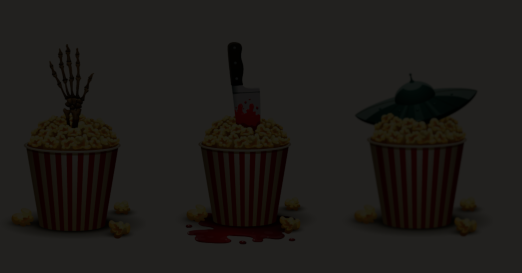 Reviews
Reviews


Released in 1982, continuing the annual tradition started in 1980 with the original, Friday the 13th Part III is a slasher film directed by Steve Miner, starring Dana Kimmell, Paul Kratka, and Richard Brooker. The film is distinct in the series for a couple releases: (1) it was released in 3-D and (2, and more importantly,) it sees our antagonist Jason Voorhees don his signature hockey mask, which has since become a distinct trademark of the character and the franchise itself.
The film was released to negative reviews from critics, but was a considerable success regardless of that. Likely benefited by premium ticket sales, the third film saw a substantial uptick in profit compared to its predecessor, although it did not reach the heights of the original 1980s film.
Friday the 13th Part III was initially intended as the final installment in the Friday the 13th trilogy. Obviously, that didn’t happen, and obviously, you know why. However, I had not actually known that until I wrote this review. I knew about how the fourth film, The Final Chapter, was originally meant to be just that, but I never knew that about this film. In retrospect though, that does make a lot of sense in the context of the film, particularly, elements toward the end that tend to mirror the original film for what I now realize was a purposeful attempt at symmetry.
The film begins with rehashed footage from the earlier installment, an approach meant to get everyone up to speed from what they might have forgotten from the last film. This is something they did in the second film as well, and it boggles my mind as much then as it does now. I could understand a short segment, but, rather, this is an extensive copy-and-paste of footage that does not play a substantial part in this film. It would have been different had the original storyline of this film been brought to fruition, which saw Ginny Field from the last film, tracking down Voorhees for a final confrontation. That concept did not happen, however, because Amy Steel declined to reprise her role.
This film plays out in a similar way to the others – Jason is back and running rampant, meanwhile, a group of young people are vacationing at the cabins.
An interview with actress Tracie Savage suggests filmmakers prioritized the 3-D effects above everything else in the film, with no second takes administered, so long as the effects were up to snuff.
This is my segue into saying how much I thoroughly dislike 3-D as a novelty in film. In general, the concept itself is a harmless novelty, but, in execution, it can be downright damning for a film. Seeing the camera obsess over a shot of a yo-yo bobbing up and down or a character holding up a severed eye for the audience to gawk at, it is easy to see this film was not a particularly taut or disciplined affair. This holds even truer when you consider the fast turnaround, with each film having to arrive a year after the last. The Friday the 13th series was a very simple formula recycled unforgivingly.
The characters in this film are either unlikable or representative of the series’ status quo. Most of the characters are warm bodies for Jason to slaughter, Shelly Finkelstein, however, is, by far, the most unlikable character in the series thus far and I am not entirely for certain whether it was purposeful or not. Either way, I will say, I was actively advocating for his demise after meeting him. The unnecessary subplot involving a biker gang, whose getups legitimately called to mind Bulk and Skull from the Power Rangers, also was a glaring proclamation of how thrown together many aspects of the film were.
This is, at this moment, as well, by far, my least favorite of the series altogether. I will not claim I have ever gotten the appeal of the Friday the 13th series, but I have at least found aspects I have enjoyed. Whether it be the scenic backdrop of the camp aesthetic or the nostalgic portrayal of youth, I have had moments where I have found enjoyment in camp slasher films like The Burning or Sleepaway Camp. This film, on the other hand, I think, exemplifies the worst common denominator of the horror sub-genre. Characters dither around, aimlessly padding the film’s runtime, with the filmmaker merely trying to find something for them to do to arrive at feature length.
The score is mismatched and peculiar, with me oftentimes categorizing this film as the “funky” Friday the 13th, and the special effects and “kills” are uninspired and uncreative. There are so many things in this film that could have and should have come across better than what they did. The reason they didn’t, is not by the constraints of it beings an 80s film, but, rather, a lack of proper allocation of time, resources, and effort. Friday the 13th was a huge box-office success with a fantastic return on investment.
Unfortunately, production companies tend to look at horror series’ like balloons with depleting air, trying to get out as many before all that air is depleted. As cheaply and as effortlessly as possible. No matter how many times it has been demonstrated that a horror franchise can actually see growth through improvement or how loyal a horror audience is, this remains as something still often seen today.

